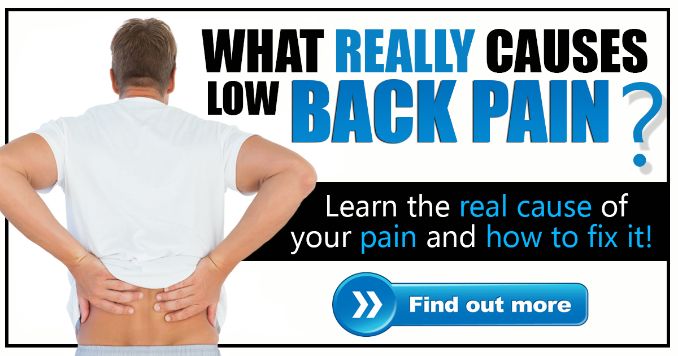
Back-to-school time is always an exciting time. Students get excited about their new supplies and clothing. The new school year holds possibilities and promises. For many students, it also brings the possibility of current or future back and neck pain. So, there are 8 tips for buying the perfect back-to-school backpack.
Imagine Lisa, a 105-pound 13-year-old girl. Lisa loves gym class, writing, and art. She frequently carries her iPad, laptop, art supplies, textbooks, cosmetics, smartphone, gym clothes, and shoes to school. She carries all of this in a backpack. Her backpack and its contents weigh more than 20 pounds. This is approximately 19 percent of Lisa’s body weight. Students should carry backpacks containing a limit of 10 percent of their body weight. Sadly, this is well over the recommended limit. Lisa felt exhausted and, over time, she developed back pain. Sadly, this fictitious example represents a common problem.
The most common source of back pain is carrying books, supplies, and equipment with poor posture. Choosing the right back-to-school backpack and using it correctly can prevent unnecessary pain and suffering.
Incorrectly Used Back-to-school Backpacks May Cause Pain and Injury
Students like Lisa may risk an accident or chronic injury. According to the United States Product Safety Commission, doctors treated approximately 2,000 backpack-related injuries in their offices, clinics, or hospital emergency rooms in 2007.
Today, students are even more likely to carry electronics, such as laptops, tablets, phones, and cameras, in their backpacks. Heavy books and electronics, such as laptops, add even more weight to the average student’s backpack.
In 2004, researchers at the University of California, Riverside, found that 64 percent of middle school students surveyed reported experiencing back pain. The study collected data from 3,498 students who carried backpacks ranging in weight from a half-pound to 37 pounds. The average backpack and contents weighed about 10 pounds. Not surprisingly, the students who carried more than 10 percent of their body weight felt the most severe pain.
A more recent 2012 study in the Archives of Disease in Childhood indicates that 61.4 percent of teenagers studied carried backpacks containing more than 10 percent of their body weight. Some students had abnormalities like Scoliosis, but around 30 percent had pain caused by continuous, involuntary muscle contractions from carrying a heavy pack. One in four students suffered back pain that lasted longer than 14 days.
Investing in the right back-to-school backpack is an investment in health, good posture, and injury prevention. As the school year commences, I would like to share a few tips on selecting the right backpack and on correct use.
How to Choose the Right Backpack for Back-to-School
Students face myriad choices among book bags, messenger bags, tote bags, and backpacks. In some cases, a crossbody messenger bag is a healthy option. However, an ergonomically friendly backpack is the best choice in most cases.
The goal is to find a bag that can hold books, electronics, and supplies while enabling healthy posture. A backpack keeps the weight evenly distributed across the body when worn correctly. However, some backpacks are more spine and body-friendly than others.
What to Look for When Selecting a Back-to-School Backpack for School or College
- Shoulder straps: The straps should be wide to help spread the weight. Thin straps can exacerbate shoulder and neck injuries.
- Padding: The straps should also be padded for comfort and support
- Capacity: Choose a pack with enough space for the essentials, such as a laptop, binder, and a couple of books. Avoid backpacks with too much capacity, as this may overload the backpack. The total weight of the contents should be less than 10 percent of the student’s body weight. In some cases, up to 15 percent is appropriate.
- Organization tools: Backpacks with compartments and pockets encourage organization and promote better weight distribution.
- Fabric: The fabric or material needs to be durable and water-resistant.
- Reflective design elements: While this has nothing to do with posture, backpacks with reflective elements increase visibility and may reduce the risk of accidents. The increased visibility helps keep a stumble from becoming a tragedy. One safety concern is that students may walk differently while carrying a backpack and are more prone to tripping.
- The correct size: Size matters when selecting a backpack that promotes healthy alignment. Never choose a backpack wider or longer than the student’s torso. Also, the backpack should not hang more than 4 inches below the student’s waist.
- Adjustable straps and a hip belt or sternum strap: These features help the backpack support the weight of the contents.
Choosing the correct backpack is the first step toward a solution. It is equally important to adjust the pack correctly and to follow recommendations on safe backpack use.
How to Use Your Backpack Correctly
If worn correctly, a good backpack distributes the load more evenly. This encourages healthy posture and minimizes fatigue. However, when worn incorrectly, an overloaded backpack may cause injury. Discourage the student from wearing a backpack slung over one shoulder. This habit may cause injury and muscle imbalances over time.
Tips for Safer Backpack Use
- The student should wear the pack with both straps.
- Adjust the straps so that the backpack rests against the lower back.
- When packing, place the heaviest items inside towards the wearer’s back.
- Keep the weight of packed items appropriate to the wearer’s size and strength. The contents must weigh less than 10 percent of the student’s body weight.
- While wearing the pack, the student should bend from the knees to lift or lower items. It is risky to fold from the waist while wearing a loaded backpack.
- Please encourage students to use their lockers or cubby holes to reduce the weight carried throughout the day.
- Many schools and colleges integrate electronics into the curriculum. Use e-book versions of learning materials when possible to minimize the need to carry heavy books.
- Some parents choose to invest in a second set of textbooks to reduce the need to carry books back and forth between home and school.
- Be cautious if you are considering a backpack on wheels. These can help in situations where the student must carry a heavy load. However, since they are often difficult to maneuver, the student may carry even more weight.
The American Occupational Therapy Association states that heavy backpacks can cause falls and spinal damage. They recommend that a backpack weighs no more than 10 to 15 percent of the wearer’s body weight.
Be sure to watch for signs that the student is carrying a load that is too heavy.
Some Questions to Ask
- Does the wearer find it difficult to put the backpack on or take it off?
- Are there frequently red strap marks on the skin over the shoulders?
- Does the wearer’s posture change while wearing the backpack? For example, does the lean forward more than usual while standing or walking?
- Most importantly, pain. Does the wearer experience tingling or numbness when wearing the backpack?
These backpack pain warning signs are inspired by advice from the American Academy of Orthopedic Surgeons.
A Few Notes About Backpacks and Medical Research
Studies about the effects of backpack use vary and sometimes offer contradictory information. However, here are a few things to consider:
- Heavy book bags and backpacks are a leading cause of back pain in children and teens.
- There is no evidence that backpacks cause structural problems or deformities.
- Pain caused by carrying a backpack is usually reversible and preventable. If the pain does not subside, see a medical professional.
- As researchers publish new studies, recommendations may change as we understand how backpacks and book bags affect students’ posture and alignment.
Other Ways to Prevent Back or Neck Pain
A good backpack minimizes back pain. Messenger and tote bags are a bigger risk since the weight is confined to one side. However, a good backpack is not the only solution. Other causes of back pain include new sports or activities done with poor form, physical work, poor posture while sitting, and long periods of inactivity. It is never too young to develop habits that prevent back pain.
The strains of sitting and inactivity can be remedied with stretches and exercises. Previously, I posted an article about 5 Quick and Easy Back and Neck Pain Relief Exercises for stretches that offer relief. These exercises help correct tightness and imbalances that lead to back and neck pain. It is never too soon for a student to incorporate preventative exercises into a daily routine.
Other ways to develop healthy posture include using correct form while sitting, standing, and performing physical work or sports. Healthy posture habits and an ergonomically friendly backpack work together to prevent back and neck pain.
Take care!
Rick Kaselj, MS
If you are suffering from back discomfort and want to end the pain once and for all, check out the Low Back Pain Solved program here!




